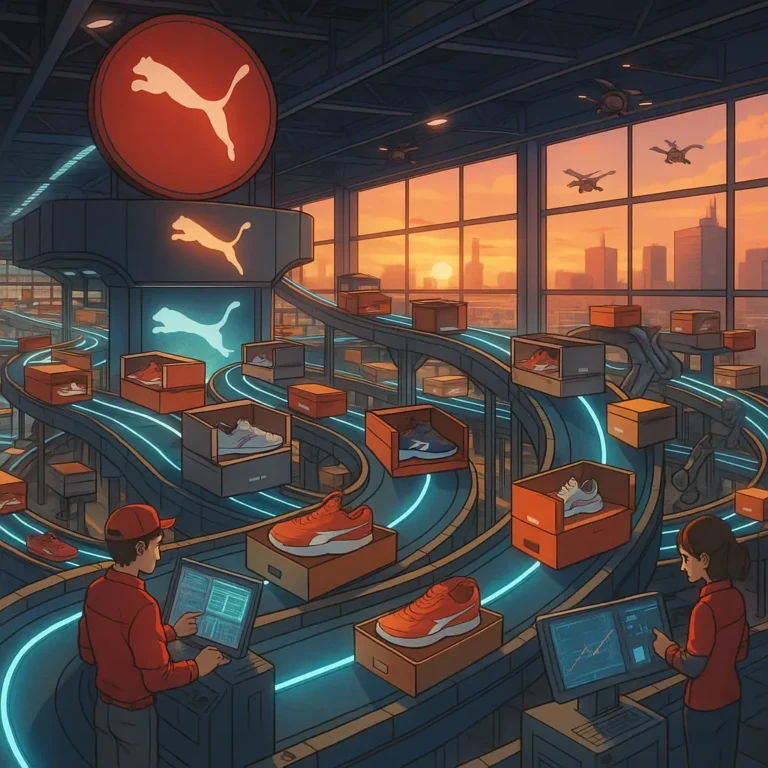
Morrisons' Digital Supply Chain Twin
Imagine trying to move a fully loaded truck through a maze that keeps changing. That’s what supply chains feel like in today’s retail market, which is why Morrisons’ digital supply chain twin was a no-brainer.
Digital supply chains are not just a theory or a future potential. They help companies like Morrison actually see, test, and make necessary changes before disruptions hit. This isn’t about future potential. It’s about what Morrisons just did.
This article shows how Morrison leveraged a digital mirror of its supply chain to gain an edge by improving its agility.
Key Nuggets:
- Morrisons built a real-time supply chain simulation to stay flexible in a volatile market.
- The digital supply chain enables planners to test warehouse and delivery changes before implementing them in real-world scenarios.
- Morrison’s digital supply chain is a demonstration of how simulation can benefit other supply chains, including those across Africa.
The Background Story of Morrisons’ Digital Supply Chain Twin
UK grocery retail has become a pressure cooker.
And Morrisons faced intense external and internal pressure.
Food inflation has reached record highs, customers are increasingly price-sensitive, and competition from discount chains such as Aldi and Lidl, as well as general cost pressures, have squeezed margins.
The old tools, such as forecasting, seasonal planning, and spreadsheets, aren’t keeping up with rapid shifts in demand or logistics breakdowns.
In the challenging macroeconomic environment, Morrisons is modernizing its supply chain to protect pricing and service levels.
However, in practice, the company faces pressure to maintain competitive pricing and availability without service disruptions—a problem exacerbated by recent events.
So, the company’s leadership decided to improve flexibility without incurring additional costs. And to do that, they needed to reimagine how decisions were made across their logistics network.
That network includes over 500 supermarkets and more than 1,700 smaller convenience outlets.
Read More: Lessons From Kroger’s Customer Fulfillment Centers.
How Morrisons’ Digital Supply Chain Twin Works
Morrisons partnered with Kallikor, a specialist in AI‑driven supply-chain simulation, to build a “living model” of its supply chain.
Adapting Kallikor’s platform gave Morrisons the ability to simulate every part of their physical logistics chain, from warehouses to trucks, store deliveries, and stock flows. All while utilizing real-time data, which means the digital twin evolves in tandem with the real world.
The system is interactive. Planners can ask questions like what happens if one distribution center shuts down, or what if we change truck routes during peak seasons? And then test the changes to see if they are favorable.
That means they do not have to guess or even run a pilot. They just run a simulation to determine the best course of action.
Read More: The BMW’s Wire Harness Supply Bottleneck Caused By Ukraine’s Invasion.
What Makes Morrisons’ Digital Supply Chain Twin So Useful
The digital supply chain replaces static planning with rapid testing.
In traditional supply chains, testing a new delivery route can take weeks—first to design it, then to trial it, and then to measure the results. Morrisons now simulates multiple plans instantly, compares them side by side, and picks the one that works best before spending money or time.
It helps at two levels:
- Tactical: Quickly test small changes like order timing or truck scheduling.
- Strategic: Model major decisions, like closing or adding a new warehouse.
These features make the digital twin a robust decision-making engine, rather than just a planning tool.
Do you want more supply chain stories like this? Subscribe here
Impact Of Morrisons’ Digital Supply Chain: What’s Changed on the Ground
Faster decisions, safer operations, and fewer surprises
Morrisons’ supply chain team can now run multiple “what-if” tests simultaneously, see the ripple effect of any change before acting, and spot disruptions sooner, thereby rerouting resources earlier.
Industry research suggests digital simulation reduces disruption risk by over 60% and can deliver double-digit operational gains. Morrisons expects the same.
But beyond the numbers, what matters is this: decisions are no longer guesswork.
Read More: How Samsung’s Poor Quality Control Led to the Galaxy Note7 Crisis.
How African Supply Chains Can Do The Same
Simulation in African supply chains has been slow, but looking at Morrison’s digital supply chain story, it is clear that acceleration is needed in that area. Nevertheless, here is what African supply chains can do without breaking the bank:
1. Start Small
African supply chains don’t need full-scale simulations from day one. Many can start by modeling just one part of the operation, such as a warehouse, a region, or a last-mile zone. Start with a key supply chain process, leverage affordable technology, and train your team.
2. Think in Scenarios, Not Spreadsheets
With power cuts, port delays, or unplanned shutdowns, many African supply chain networks face daily disruptions. But simulation tools can help them prepare planned responses for when the disruptions inevitably happen.
For example, an agro-supply distributor in East Africa might use simulation to test what happens when a supplier goes offline or fuel prices spike, and then decide on adequate responses.
3. Build Toward Live Models
Over time, integrate data sources so the model reflects your real supply chain every day. That way, it becomes your control room instead of just a reporting tool.

Obinabo Tochukwu Tabansi is a supply chain digital writer (Content writer & Ghostwriter) helping professionals and business owners across Africa learn from real-world supply chain wins and setbacks and apply proven strategies to their own operations. He also crafts social content for logistics and supply chain companies, turning their solutions and insights into engaging posts that drive visibility and trust.








